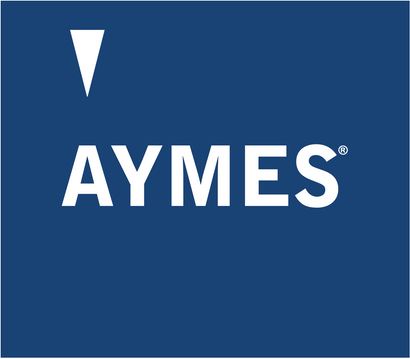In support of World Cancer Day (4th February 2022), specialist oncology dietitian Adele Hug is putting the spotlight on cancer cachexia. Since cancer cachexia was first defined by Fearon’s group in 2011, the evidence relating to its effects on clinical outcomes and quality of life continues to grow.1
Definition
Cancer cachexia (CC) is a progressive syndrome characterised by a chronic inflammatory response resulting in muscle loss (with or without weight loss). CC can be divided into three phases: pre-cachexia, cachexia and refractory cachexia (figure 1). CC is a type of disease-related malnutrition (DRM); table 1 highlights further relevant definitions.
Figure 1: The three phases of cancer cachexia1

Table 1: The overlapping conditions used to differentiate malnutrition2
| Condition |
Definition or example |
Clinical practice points |
| Malnutrition (synonym: undernutrition) |
No formal consensus definition. ESPEN use this definition: “Malnutrition can be defined as a state resulting from lack of intake or uptake of nutrition that leads to altered body composition (decreased fat free mass) and body cell mass leading to diminished physical and mental function and impaired clinical outcome from disease.”2,3
|
This is an umbrella term for all conditions that involve loss of body tissue. |
| Malnutrition without disease |
May be socioeconomic, hunger-related and/or ageing. |
Often linked to a patient’s social situation |
| Disease-related malnutrition without inflammation |
An example is dysphagia caused by a neurological condition. |
This relates to co-morbidities and complications of cancer and their associated treatments. |
| Disease-related malnutrition with inflammation (acute) |
A catabolic condition alongside a disease where an inflammatory response causes tissue breakdown, anorexia, poor oral intake, muscle mass decline and weight loss. This is accelerated by decreased physical activity. For example, after major surgery or during sepsis. |
May be linked to previous/future surgeries. Consider the risk of sepsis with certain anti-cancer treatments. |
| Chronic disease-related malnutrition with inflammation |
For example, chronic obstructive pulmonary disease (COPD), inflammatory bowel disease (IBD). |
Consider co-morbidities. |
| Cancer cachexia (a specific type of chronic DRM with inflammation) |
“A multifactorial syndrome defined by an ongoing loss of skeletal muscle mass (with or without loss of fat mass) that cannot be fully reversed by conventional nutritional support and leads to progressive functional impairment.”1
|
See section below on 'Management' for important practice points |
| Sarcopenia |
“Sarcopenia is a progressive and generalised skeletal muscle (loss) disorder that is associated with increased likelihood of adverse outcomes including falls, fractures, physical disability and mortality.”4
|
Consider muscle and functional status. |
| Frailty |
No formal definition – variations of a clinical state of vulnerability to return to homeostasis when exposed to a stressor event that increases risk for developing increased dependency and/or mortality.5,6
|
Recognise that cancer is often treated as a chronic disease. Consider the impact of cancer treatments on the body (they may act as a stressor). Ageing is also linked with frailty. |
Prevalence
A recent systematic review of UK data estimates that annually, over one-third (33.8%) of cancer patients experience clinically significant weight loss (>5%), and 35.1% experience sarcopenia.7 Similar estimations are reported across the EU and USA.⁸ Previous studies have found certain tumour sites to be at a higher risk of cancer cachexia. These include upper gastrointestinal tumours (oesophagus, stomach, and pancreas), lung and head and neck cancers. In contrast, breast and prostate cancer patients are at lower risk of CC.8,9 However, a recent review including 5,497 primary and secondary breast cancer patients found the prevalence of sarcopenia to be 45%.10 These sarcopenic patients may have the metabolic inflammatory response indicative of CC but would not be defined as having CC due to the current diagnostic focus on weight loss.
Aetiology
The aetiology of cancer cachexia is multifactorial, varied, and individualised. Contrary to popular belief, CC is not caused by inadequate nutritional intake or physical inactivity alone (although both may contribute to progression). There is disruption to the homeostasis of energy balance and to immune and endocrine function (among other body systems), triggered by tumour secretions such as cytokines and pro-inflammatory mediators.9
Consequences
Scientific evidence and clinical experience tell us that cancer cachexia affects patients’ clinical outcomes and quality of life as well as increasing mortality.9 CC involves not only muscle mass decline, but multi-organ dysfunction.11 This may have wider implications for nutrition support and dietetic interventions. In addition to current dietetic interventions, research is needed to investigate if specific dietary interventions for malabsorption, gut dysmotility and endocrinology may be indicated due to tissue loss and functionality changes.
CC is associated with a decreased ability to tolerate treatments. Cancer is often treated with multiple combinations (chemotherapy, radiotherapy, immunotherapy), and each come with their own unique side effects.6,9 Therefore, it is crucial to prevent, identify and manage CC as early as possible.
Screening and Diagnosis
It is now recommended by multiple worldwide nutrition and oncology groups that all people with cancer should be screened using a validated screening tool at the point of diagnosis as well as throughout their treatment and beyond.12,13
There is a lack of consensus as to which tool to use, as each have pros and cons. Functional status and muscle mass screening should be considered due to the limitations of focusing solely on weight loss. In addition, screening for pre-cachexia is recommended to identify those with <5% weight loss, anorexia and systemic inflammation causing metabolic disturbances (i.e., raised C-reactive protein (CRP)>.2
Global Leadership Initiative on Malnutrition (GLIM) criteria will soon play a bigger role in cancer nutrition screening.14,15 However, in current clinical practice, screening is not always achievable due to large patient caseloads, inadequate training on the use of screening tools, and the lack of onward referral pathways for those identified as 'at risk'.
Management
The complex management of cancer cachexia should not be underestimated. Interventions that improve muscle mass, fat mass and/or functional status, including nutrition interventions, play a key role in the prevention and management of cancer cachexia. A multimodal multidisciplinary team (MDT) approach is necessary when managing patients with CC due to the heterogenicity of CC, their cancer type, concomitant treatment(s) and many other person-specific factors (e.g., age, sex, ethnicity, co-morbidities, socioeconomic status etc.).
Top tips for cancer cachexia nutritional management include:
- Early identification of nutritional risk via screening and appropriate nutritional assessment
- Implementation of pre-habilitation principles for all patients to prevent or delay progression16
- All patients should be made aware that muscle synthesis requires dietary intervention (high protein diet) as well as physical activity (including weight-bearing exercise)17
- Appropriate nutrition support should be prescribed using established guidelines17,18
- Treatment and management of nutrition impact symptoms (e.g., nausea, low appetite)19
- Appropriate education and training on CC for all involved in cancer patient care20
- Accessible information and advice for all patients and their carers, considering health and social inequalities.
- A stratified approach to the provision of specialist dietetic input – whereby all staff can provide universal advice, leaving more targeted and specialist interventions for experienced clinical oncology dietetic teams.
New research
We are waiting for the results of the ‘Multimodal intervention for cachexia in advanced cancer patients undergoing chemotherapy (MENAC) study’, which ends recruitment in 2022. Interestingly, the protocol includes a nutrition component.21 Whilst there is exciting ongoing research into pharmaceuticals, so far, none have met their primary endpoints.11,22 Patients may wish to include long-chain N-3 fatty acids within their diet (e.g., by eating oily fish such as salmon, trout or mackerel once or twice a week) due to their anti-inflammatory properties, but the evidence remains low.17
Conclusion
Early identification and management of cancer cachexia is crucial to improve not only survival but to enhance our patient’s quality of life. We need to upskill and empower healthcare professionals to be able to support patients with CC and to recognise when to refer on for specialist oncology dietetic care. Dietitians are well-placed to advise patients on evidence-based interventions for managing CC, such as high-protein diets alongside weight bearing physical activity. Further research is needed into the role of dietary interventions in CC prevention and management.
- ◄References:
-
- Fearon K et al. Definition and classification of cancer cachexia: An international consensus. Lancet Oncol. 2011 Feb 05;12(5):489–95.
- Cederholm T et al. ESPEN guidelines on definitions and terminology of clinical nutrition. Clin Nutr. 2017 Feb;36(1):49–64.
- Elia M. Defining, Recognizing, and Reporting Malnutrition. Int. J Low Extrem Wounds. 2017 Dec 16;16(4):230–7.
- Cruz-Jentoft AJ et al. Sarcopenia: revised European consensus on definition and diagnosis. Age Ageing. 2019 Jan 01;48(1):16–31.
- Morley JE et al. Frailty Consensus: A Call to Action. J Am Med Dir Assoc. 2013 Jun;14(6):392–7.
- Handforth C et al. The prevalence and outcomes of frailty in older cancer patients: a systematic review. Ann Oncol. 2015 Jun;26(6):1091–101.
- Sullivan ES et al. Epidemiology of cancer‐related weight loss and sarcopenia in the UK and Ireland: incidence, prevalence, and clinical impact. JCSM Rapid Commun. 2020 Jul 08;3(2):91–102.
- Anker MS et al. Orphan disease status of cancer cachexia in the USA and in the European Union: a systematic review. J. Cachexia Sarcopenia Muscle. 2019 Feb 28;10(1):22–34.
- Baracos VE et al. Cancer-associated cachexia. Nat Rev Dis Primers. 2018 Jun 07;4(1):17105.
- Zhang X-M et al. Sarcopenia as a predictor of mortality in women with breast cancer: a meta-analysis and systematic review. BMC Cancer. 2020 Dec 04;20(1):172.
- Lim S et al. Development and progression of cancer cachexia: Perspectives from bench to bedside. J Sport Health Sci. 2020 Dec;2(4):177–85.
- Arends J et al. Cancer cachexia in adult patients: ESMO Clinical Practice Guidelines. ESMO Open. 2021 Jun;6(3):100092.
- Arends J et al. ESPEN guidelines on nutrition in cancer patients. Clin Nutr. 2017 Feb;36(1):11-48.
- Cederholm T et al. GLIM criteria for the diagnosis of malnutrition – A consensus report from the global clinical nutrition community. Clin Nutr. 2019 Feb;38(1):1–9.
- Zhang X et al. The GLIM criteria as an effective tool for nutrition assessment and survival prediction in older adult cancer patients. Clin Nutr. 2021 Mar;40(3):1224–32.
- National Institute for Health Research Cancer and Nutrition Collaboration, Royal College of Anaesthetists, Macmillan Cancer Support [Internet]. Principles and guidance for prehabilitation within the management and support of people with cancer [published 2020 Nov 30; cited 2022 Jan]. Available from: https://cdn.macmillan.org.uk/dfsmedia/1a6f23537f7f4519bb0cf14c45b2a629/1532-source/prehabilitation-for-people-with-cancer-tcm9-353994?_ga=2.162991932.168467532.1643270196-1531101225.1643270196
- Muscaritoli M et al. ESPEN practical guideline: Clinical Nutrition in cancer. Clin Nutr. 2021 May;40(5).
- National Collaborating Centre for Acute Care, UK [Internet]. Nutrition Support for Adults Oral Nutrition Support, Enteral Tube Feeding and Parenteral Nutrition: Clinical guideline [2006 Feb 22; cited 2022 Jan]. Available from: https://www.nice.org.uk/guidance/cg32/resources/nutrition-support-for-adults-oral-nutrition-support-enteral-tube-feeding-and-parenteral-nutrition-pdf-975383198917
- Hug A [Internet]. Oncology [2020 Sep 02; cited 2022 Jan]. Available from: https://aymes.com/blogs/disease-related/oncology.
- Prado CM et al. Examining guidelines and new evidence in oncology nutrition: a position paper on gaps and opportunities in multimodal approaches to improve patient care. Support Care Cancer [Internet]. 2021 Nov 23 [cited 2022 Jan]. DOI: 10.1007/s00520-021-06661-4.
- Solheim TS et al. Cancer cachexia: rationale for the MENAC (Multimodal—Exercise, Nutrition and Anti-inflammatory medication for Cachexia) trial. BMJ Support Palliat Care. 2018 Sep;8(3):258–65.
- Ni J and Zhang L. Cancer Cachexia: Definition, Staging, and Emerging Treatments. Cancer Manag Res. 2020;12:5597–605.




